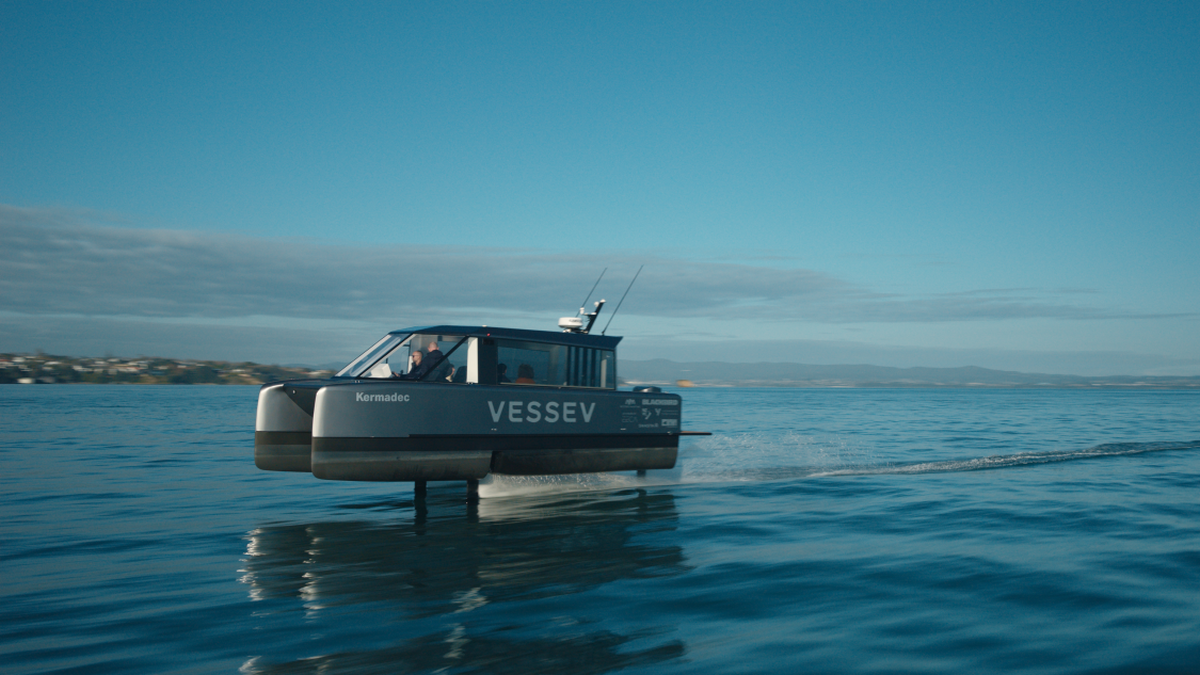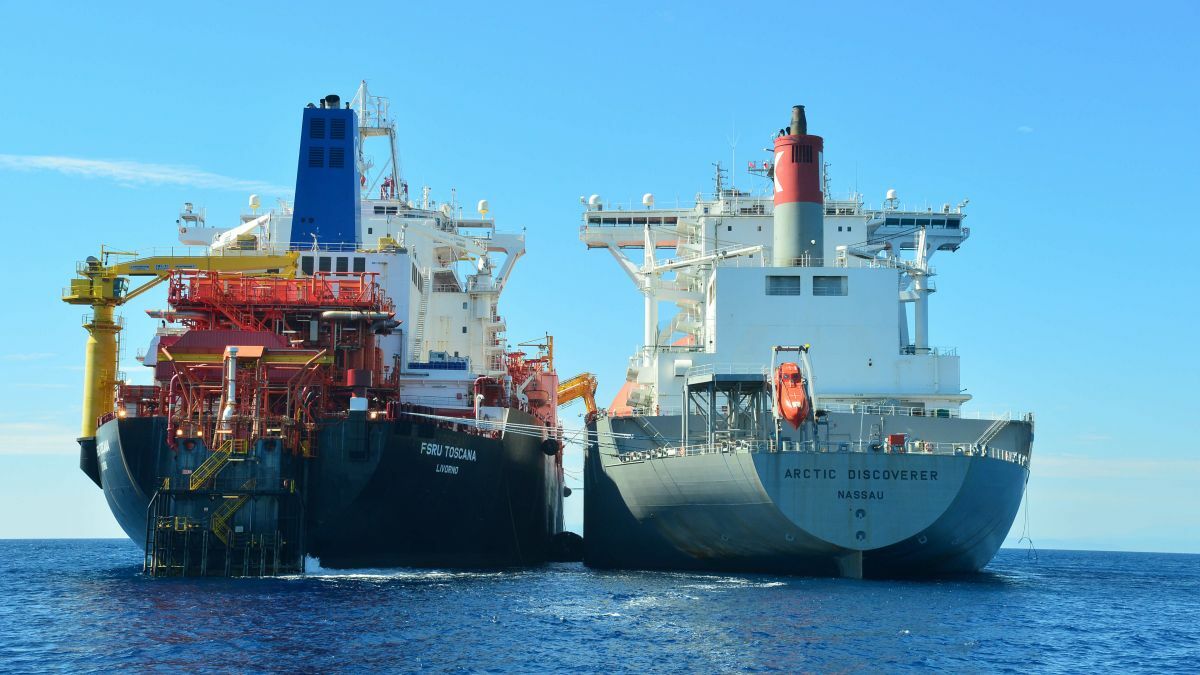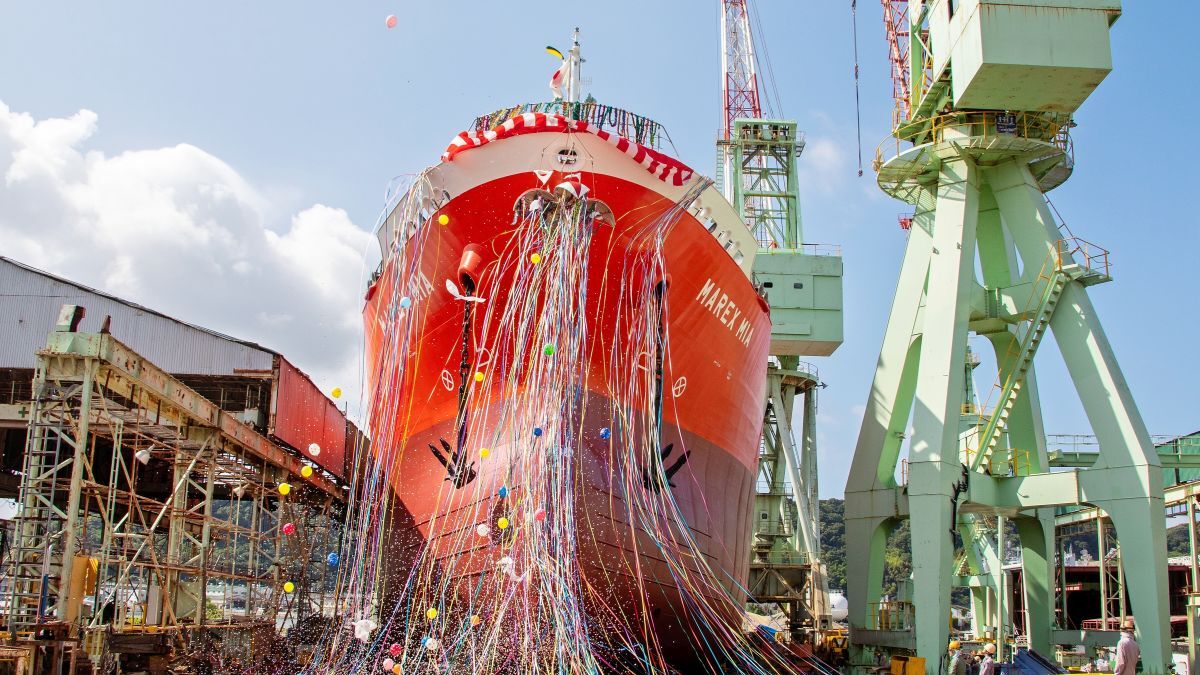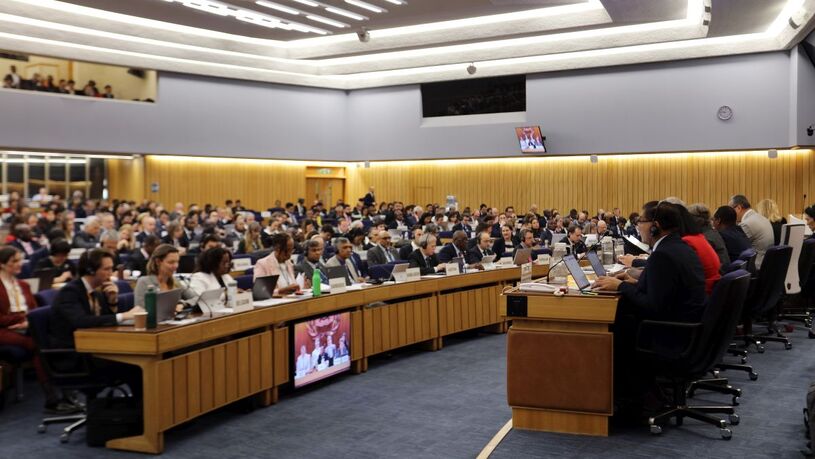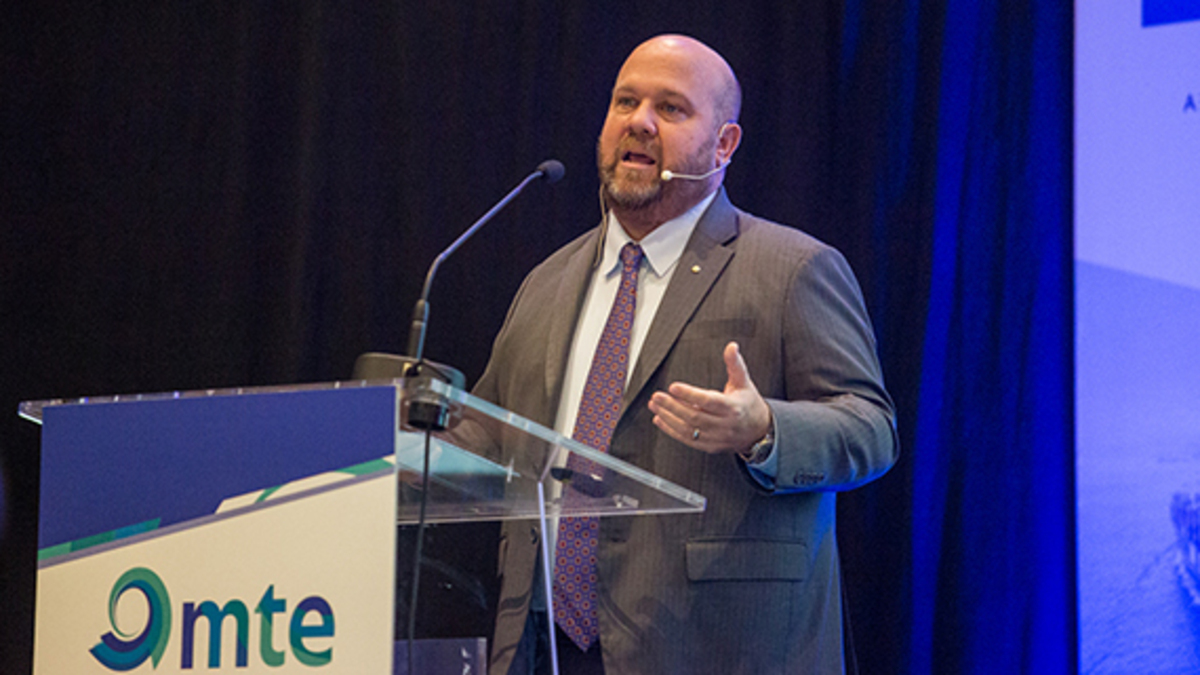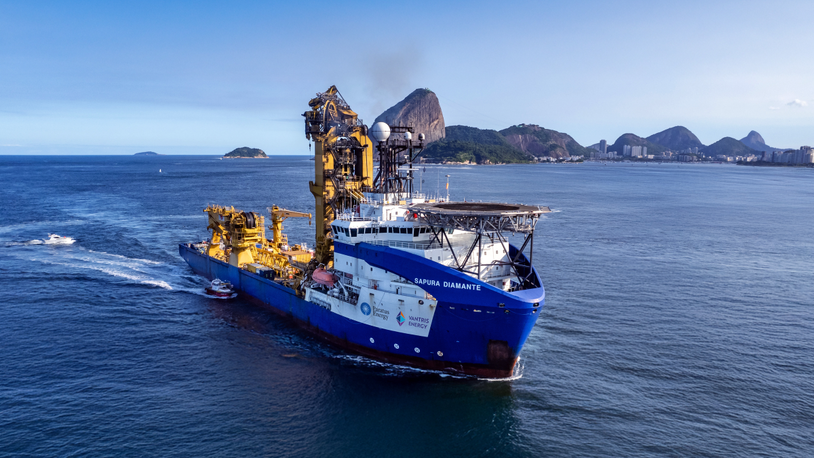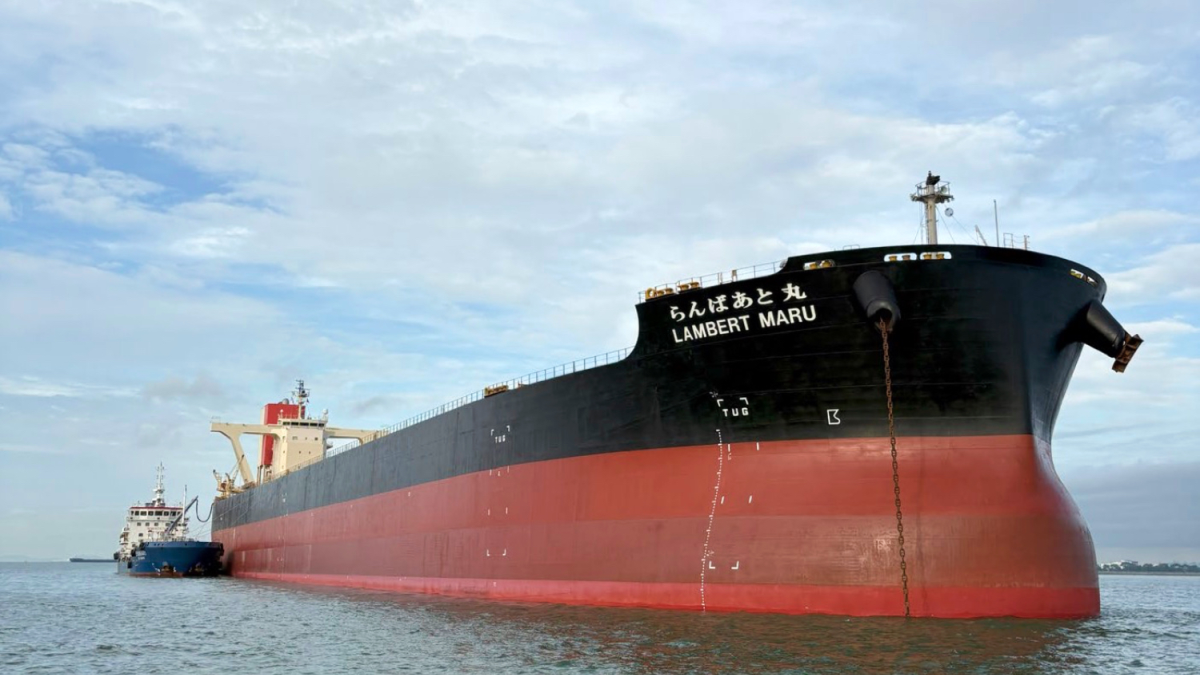Business Sectors
Contents
Register to read more articles.
Apple watch alumni and Fullers360 pave way for New Zealand’s net-zero ferry future
The launch of a new all-electric foiling fast ferry marks the start of a wave of newly designed vessels that will enable New Zealand’s largest ferry company to meet its zero-emissions goal by 2040
A nine metre-long, 10-passenger electric foiling ferry will enter commercial service in Auckland, New Zealand, by December 2024 in a probable world-first that will lead to a new wave of 100-passenger vessels of similar design as early as 2026.
“These new ferries will cut millions of dollars off annual running costs and bring us closer to our target of a net-zero ferry company by 2040,” explains Mike Horne, chief executive of Fullers360 ferry company that is backing e-foiling technology. “It’s just a question of scaling up the VS-9.”
The brain trust at Vessev brought the VS-9 from concept to completion in 18 months. Eric Laakmann, the chief executive said: “The principle is the same and we expect to have a 100-passenger ferry foiling at 25-30 knots in 2026. The technology is here and we’re proving it. Electric foiling makes boats three to five times more efficient and that is not something you can ignore in a sustainable future.”
Meantime, orders are coming in for the VS-9, with 12 due to roll off the assembly line through 2025. They boast a service speed of 25 knots with a range of 50 nautical miles. “We’re getting a lot of enquiries from water taxi companies, eco-resorts, and even private boaters,” adds Mr Laakmann, a US-Canadian-born electrical engineer who helped deliver the first Apple watch.
Designed, built, and tested by Vessev using some of the same technologies as the America’s Cup yachts, the VS-9’s foils enable it to ride completely above waves and provide the experience of a big boat. Take-off speed is 18-19 knots and cruising speed between 22-25 knots. The foil stabilisation systems enter operation at 12 knots, actively reducing pitch and roll motion, even when not fully on foils and ‘flying’. The foils are fully retractable which enables the vessel to operate in shallow water and can be transported on a trailer. Construction is by carbon fibre laminates.
“We were told it would be impractical to fully retract the foils out of the water on a commercial vessel,” Mr Laakmann tells Riviera. “To our knowledge the VS-9 will be the only certified passenger electric hydrofoiling vessel capable of this. And because the VS-9 also uses many of the same foiling techniques as in the America’s Cup, it can handle higher winds and bigger seas at greater levels of efficiency. The systems are more difficult to engineer up-front but they perform better.”
An enthusiast for sustainable sea transport, Mr Laakmann believes foiling will be crucial in the maritime industry’s adoption of zero-emissions solutions. “Our partnership with Fullers360s’ and NetZero Maritime will accelerate the adoption of new technologies. The development and commercialisation of the VS-9 unlocks entirely new possibilities on the water and opens up thousands of new routes around the world that are currently impractical for traditional vessels.”
“Electric foiling makes boats three to five times more efficient”
For Fullers360’s chief executive, the imminent commercialisation of the VS-9 is an important step towards the group’s goal of reaching zero emissions by 2040. “It’s our intention for the company to be 100% electric or hydrogen-operated by 2040 and foiling is absolutely a part of that vision for us,” explains Mr Horne. “The VS-9 will be the first fully electric passenger vessel to operate in Auckland.”
Fullers360 is New Zealand’s largest ferry operator, serving a city of 1.7M people in the Waitemata Harbour and wider Hauraki Gulf. Its cross-city, 15-minute service to the seaside suburb of Devonport carries well over a million passengers a year, while other services carry six million commuters and visitors annually. It’s both a commuter and a tourism operation. “We’re a big part of the city’s entire tourism operation,” Mr Horne says.
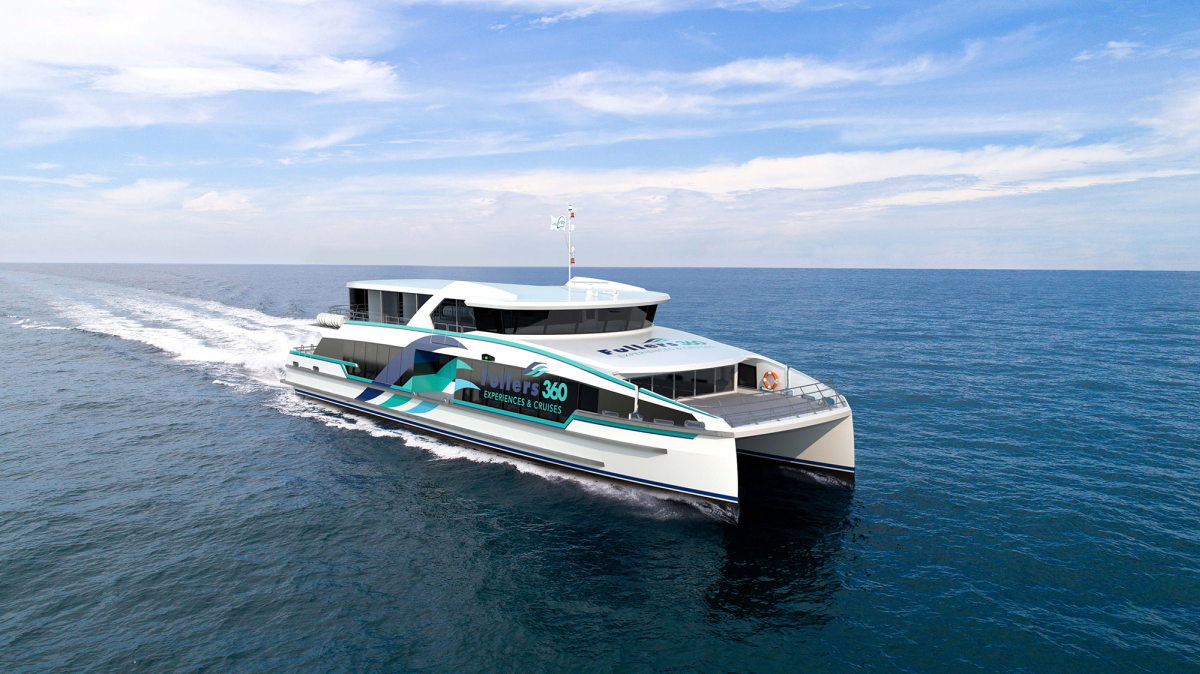
Scaling up
And it’s about to get bigger. As the 10-passenger electric foiling ferry begins commercial operations, a series of 300-passenger, 35-m electric ferries are under construction at the North Island yard of Q-West. Designated F360-300, these dynamically positioned vessels are the result of a partnership between Fullers360, Incat Crowther and Hamilton Jet. Propulsion will be provided by Corvus batteries and Danfoss electric motors. Between trips, the batteries will be topped up within three or four minutes in a ‘sip-charging’ operation.
A commercial launch date for the first F360-300 is set for the final quarter of 2026.
While these ferries take shape, it is understood that a shoreside infrastructure project is in the works with local government to support the new electric ferry fleet.
“Foiling is absolutely a part of that vision for us”
This is something of a revolution for the country. “There’s nothing yet off the shelf for big boats,” Mr Horne explains. “We’re collaborating with heavy trucking and other industry sectors currently. All this must be integrated for the first time into New Zealand’s maritime industry. So far, the ferry industry in New Zealand has been based around diesel-fuelled vessels, but now New Zealand is leading the way in all the infrastructure involved in zero-emissions vessels, including workforce training in electric propulsion and foiling.”
The Waitemata Harbour and Hauraki Gulf constitute a big body of water and Fullers360’s vessels cover approximately 117 km of service routes. The charging infrastructure is expected to be installed within the inner harbour while, in the long run, it is anticipated that hydrogen-fuelled ferries will service the longer trips. Looking further ahead, Fullers360 is evaluating the efficiency of a 100-passenger hydrogen-fuelled foiling ferry as soon as the technology catches up and becomes commercially viable.
Meanwhile, the 10-seater VS-9 represents an important toe in the water. At first it will be deployed as an excursion ferry on harbour cruises of about 40 minutes duration. Although ticket prices have not been fixed, they will likely be at a premium. As electric foiling on a small ferry proves its viability, Fullers360 sees no problem in scaling up to the much bigger sister ship, the 18-m-long, all-electric foiling 100-seater. “It will be on the water within 24 months,” he predicts. “And a hydrogen-fuelled 100-passenger ferry should be ready within three years.”
Full ahead for foiling, you might say.
Related to this Story
Events
LNG Shipping & Terminals Conference 2025
Vessel Optimisation Webinar Week
Marine Coatings Webinar Week
© 2024 Riviera Maritime Media Ltd.


